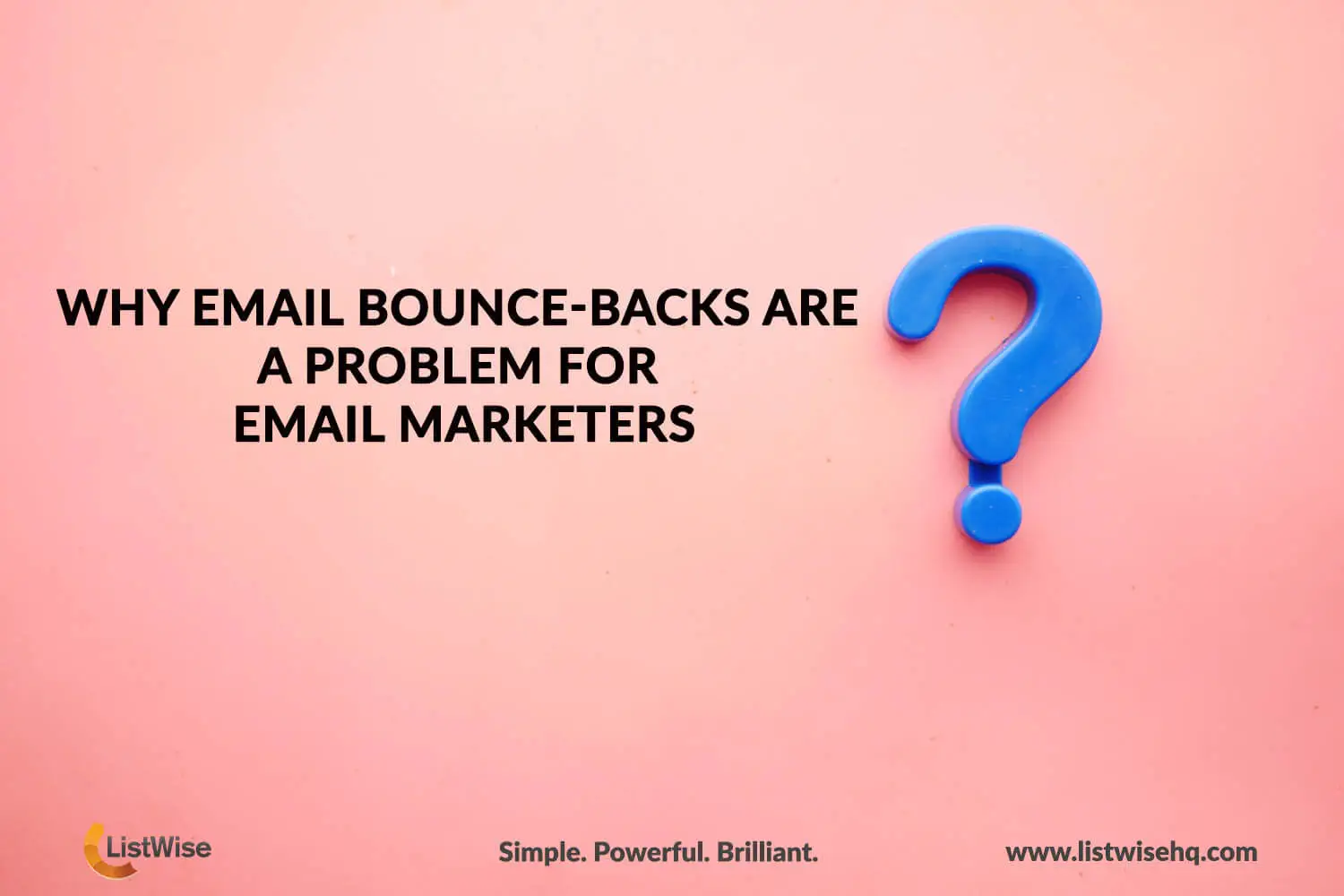Why Email Bounce-backs are a Problem for Email Marketers
A high bounce rate is indeed considered undesirable for email marketers. Here are the main reasons why:

1. Email deliverability: When an email bounces, it means that it was not successfully delivered to the recipient’s inbox. This can negatively impact your email deliverability rates. Internet service providers (ISPs) track bounce rates as an indicator of sender reputation. If your bounce rate is consistently high, ISPs may flag your emails as spam or route them to the recipients’ spam folders, making it difficult for your future emails to reach the inbox.
2. Wasted resources: Email marketing campaigns involve time, effort, and resources. If a significant portion of your emails bounce, it means you’re wasting these resources on recipients who will never see your message. This inefficiency can decrease the return on investment (ROI) of your email marketing efforts.
3. Database quality and data hygiene: High bounce rates can indicate issues with your email list quality. Bounces are categorized into two types: hard bounces and soft bounces. Hard bounces occur when an email is undeliverable permanently, typically due to an invalid or non-existent email address. Soft bounces are temporary delivery failures, often caused by full mailboxes or temporary server issues. By analyzing bounce rates, you can identify and remove invalid or inactive email addresses from your list, ensuring better data hygiene and improving the overall health of your email database.
4. Reputation and engagement: Email service providers (ESPs) and spam filters take into account recipient engagement metrics to determine whether an email is valuable or spam. High bounce rates can indicate poor list management practices, which can harm your sender reputation. A damaged reputation can lead to lower inbox placement rates and reduce the chances of your emails being seen by engaged recipients.
5. Conversion and engagement rates: A high bounce rate can result in reduced conversion and engagement rates. If a significant number of recipients never receive your emails, they cannot take action on your offers, leading to lower click-through rates, conversions, and overall campaign effectiveness.
To mitigate the negative impact of high bounce rates, it’s crucial for email marketers to regularly clean their email lists, ensure opt-in consent, and implement best practices for maintaining a healthy sender reputation. By doing so, you can improve deliverability, engagement, and ultimately, the success of your email marketing campaigns.

